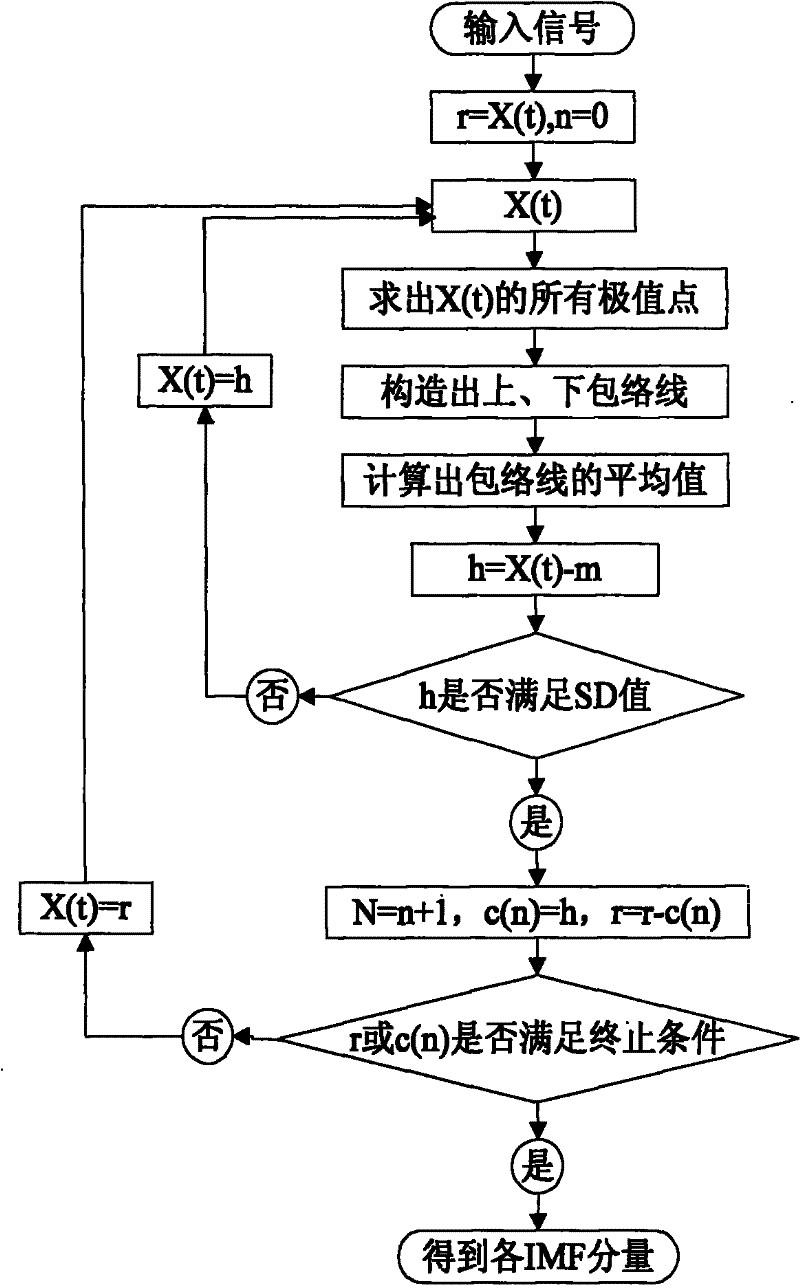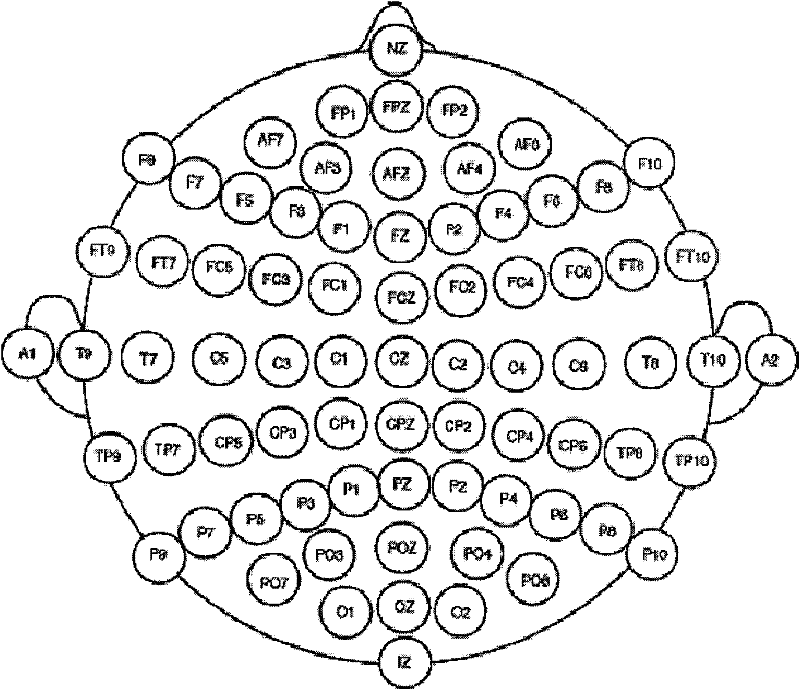Self-adaptive EEG signal ocular artifact automatic removal method
A technology of EEG signal and electrooculogram artifacts, applied in the field of bioinformatics, can solve problems such as manual screening, and achieve the effect of automatically removing electrooculogram artifacts
- Summary
- Abstract
- Description
- Claims
- Application Information
AI Technical Summary
Problems solved by technology
Method used
Image
Examples
Embodiment Construction
[0051] The complete process of signal processing of the HHT-based EEG artifact removal method includes the following four (1.2.3.4) parts. Among them, the first part is the existing method, and the characteristics of the application of the present invention include three (2.3.4) parts:
[0052] The complete process of signal processing is as follows: figure 1 shown.
[0053] 1. Empirical Mode Decomposition (EMD) of EEG signals.
[0054] The EEG signal X(t) is a non-stationary signal. In order to study its transient characteristics, empirical mode decomposition (EMD) must be carried out to obtain each IMF component c i (t) and the remainder r(t).
[0055] Among them, i is the number of decomposed IMF components, i is completely driven by data, and the value of i is completely determined by X(t). For different X(t) signals, the number of decomposed IMF components i is Different, this point also reflects the adaptability of EMD decomposition. This is different from wavelet t...
PUM
 Login to View More
Login to View More Abstract
Description
Claims
Application Information
 Login to View More
Login to View More - R&D
- Intellectual Property
- Life Sciences
- Materials
- Tech Scout
- Unparalleled Data Quality
- Higher Quality Content
- 60% Fewer Hallucinations
Browse by: Latest US Patents, China's latest patents, Technical Efficacy Thesaurus, Application Domain, Technology Topic, Popular Technical Reports.
© 2025 PatSnap. All rights reserved.Legal|Privacy policy|Modern Slavery Act Transparency Statement|Sitemap|About US| Contact US: help@patsnap.com



